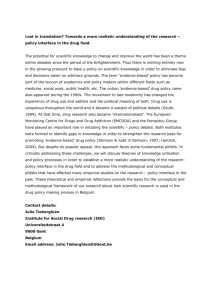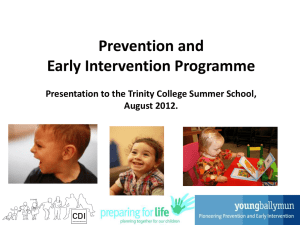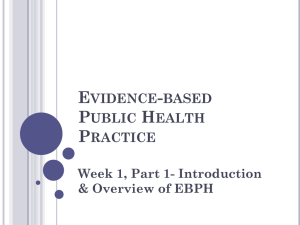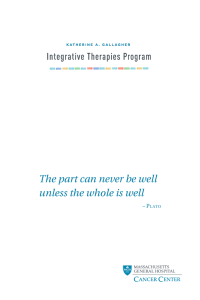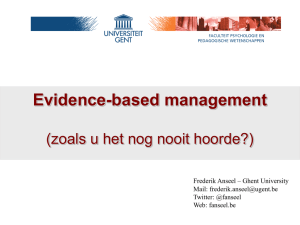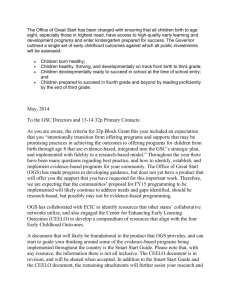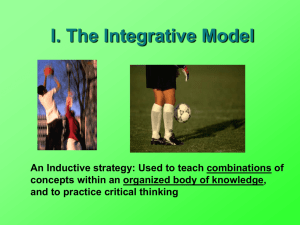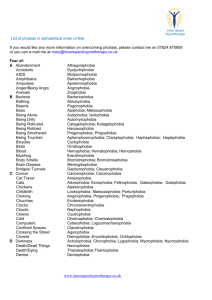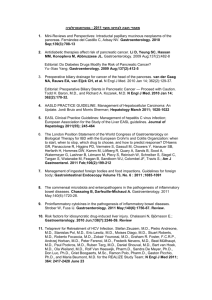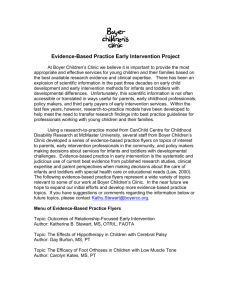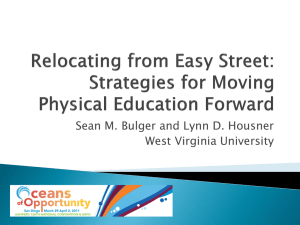Integrative Medicine: The Hopkins Perspective
advertisement
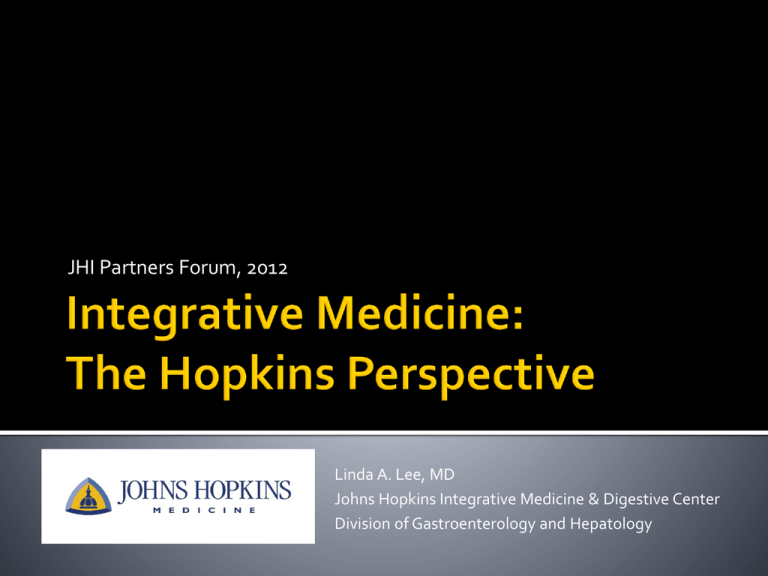
JHI Partners Forum, 2012 Linda A. Lee, MD Johns Hopkins Integrative Medicine & Digestive Center Division of Gastroenterology and Hepatology Primary location at Green Spring Station Consultative services also available at the Hospital Staff Four physicians (internist, GYN, GI, rheumatologist) Two acupuncturists (TCM) Four licensed massage therapists Two psychotherapists – hypnotherapy, CBT, guided imagery One nutritionist – individual consultations and group classes To create an inviting, comfortable, safe environment Allow lengthy appointments so there is more time to understand the multiple dimensions of illness, to educate the patient, and discuss the full range of evidence-based therapies Offer services within the Center that would be readily accessible to patients as well as referring providers 4000 visits to the Center in FY12 Open Mon-Sat, evening hours until 9 pm 6 examination rooms, all multipurpose Staff offer personal, concierge-type service Is the only integrative medicine center in the US based in gastroenterology www.hopkinsintegrative.org What training or education did she receive? Is the practitioner licensed in the state? Is certification by a professional organization required for state licensure? (e.g. NCCAOM) What clinical and research experience does she have? Is the practitioner integrative, or disintegrative? Engage the patient as an active participant Provide education about health, symptoms, and diseases Counsel in appropriate nutrition practices and supplement use Discuss evidence-based pharmacologic and mindbody therapies The patient-provider interaction is a vital part of the healing process Medical therapy Additional testing Lifestyle changes Low fat diet Avoid caffeine Avoid carbonated beverages Limit your alcohol intake Stop smoking Raise the head of your bed Esophageal hypersensitivity has been implicated as a cause of reflux symptoms Psychosocial factors are known to mediate both peripheral and central hypersensitivity and play a role in symptom perception among patients with GERD Behavioral medicine techniques (CBT and hypnotherapy) may be a useful adjunct to other antireflux therapy in those who experience increased symptoms during stress McDonald-Haile, J, et al. Gastroenterology, 1994;107(1):61-9 Van Peski-Oosterbaan, AS, et al. Am J Med 1999; 106: 424–9 Miwa, H et al. J Neurogastroenterol Motil, Vol. 16 No. 4 October, 2010 Medical therapy Additional testing Lifestyle changes Low fat diet Avoid caffeine Avoid carbonated beverages Limit your alcohol intake Stop smoking Raise the head of your bed PLUS THIS: Understand and treat the symptoms in the context of the patient’s home and work life Educate the patient as to why GERD occurs Discuss weight loss as a longterm management strategy Discuss evidence-based acupuncture Answer questions about the use of supplements Determine if stress is a trigger for symptoms and identify strategies for addressing stress Dickman, R. et al. Aliment Pharmacol Ther 2007. 26: 1333–1344 Fennel seed no scientific evidence… yet Licorice Apple Cider Vinegar Conventional care Physician Physician Acupuncturist JHIMDC Nutritionist Psychotherapist Massage Therapist Cost savings could be realized by Decreasing utilization of expensive medical interventions such as pharmaceuticals, or reducing trips to the ER Reducing provider visits by offering group interventions, such as stress reduction, nutrition education, and mind-body skills training By the year 2022, 80% of the US population will be overweight or obese (currently 66%) Projected healthcare spending related to overweight and obesity by the year 2020 is estimated to be $437.6 billion (was $81.5 billion in 2000) Yang, F. et al Obesity (2008) 16 10, 2323–2330 Current healthcare reimbursement favors procedures and pharmaceuticals over education, adequate faceto-face time, mind-body therapies Conventional practitioners lack knowledge about evidence-based healing practices and practitioners, and how to identify them

